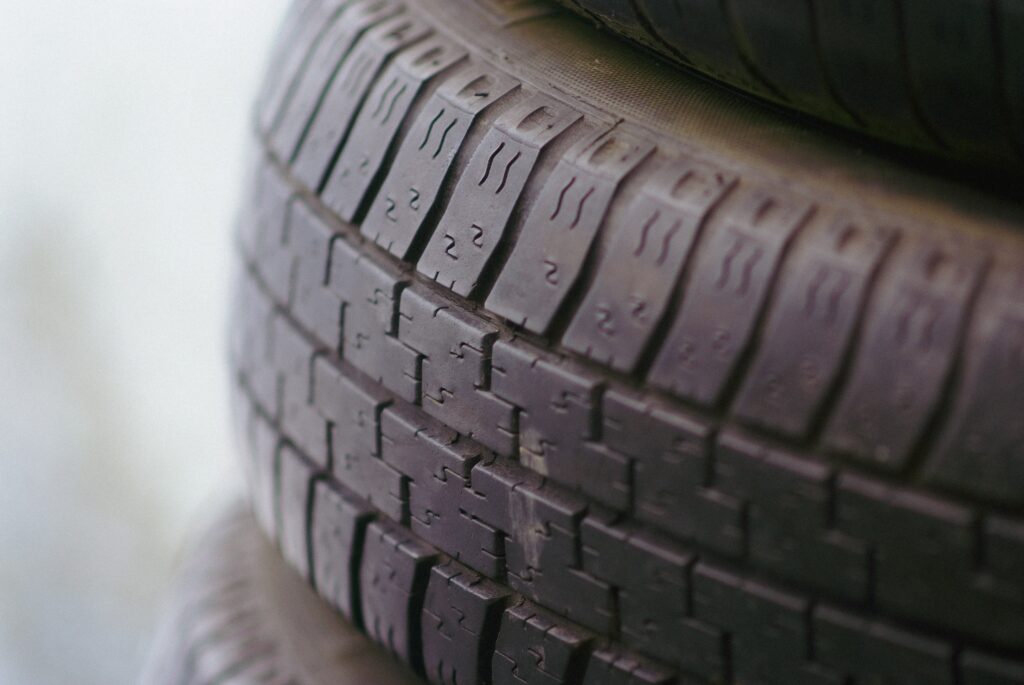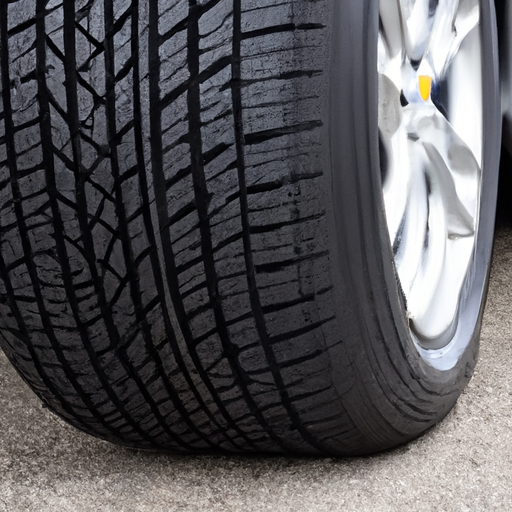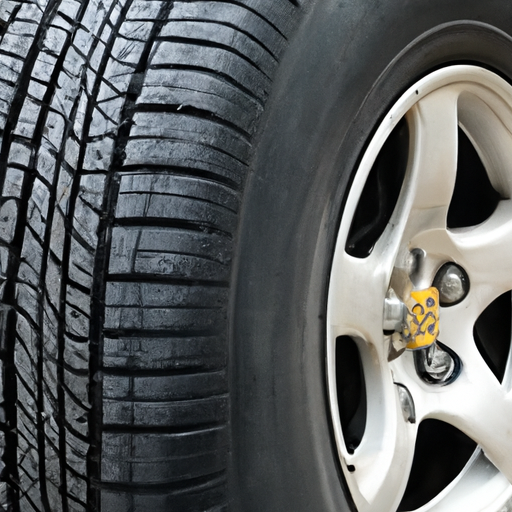Have you ever wondered if tire rotation can actually extend the lifespan of your tires? This article aims to explore just that. By understanding the importance of regular tire rotation and how it distributes wear more evenly, you’ll discover how this simple maintenance task can help maximize the lifespan of your tires and potentially save you money in the long run. So, if you’re curious to learn more about the benefits of tire rotation and how it can benefit your vehicle, keep reading!

What is tire rotation?
Tire rotation is the process of switching the positions of the tires on your vehicle to promote even wear and extend the lifespan of the tires. It involves moving the tires from one position to another, typically from front to rear or side to side. By rotating your tires regularly, you can maintain their performance and keep them in optimal condition for a longer period of time.
Rotation pattern
There are various rotation patterns that can be followed when it comes to rotating your tires. The most common ones include front to rear, side to side, and the X-cross pattern. Each pattern has its own advantages and is suitable for different types of vehicles. The choice of rotation pattern may depend on factors such as the type of vehicle, tire type, and driving conditions.
Importance of tire rotation
Tire rotation plays a crucial role in maintaining balanced and consistent performance of your tires. It helps to ensure even tire wear, improve traction, and extend the overall lifespan of your tires. Neglecting to rotate your tires regularly can result in uneven wear patterns, reduced traction, and premature tire failure. Therefore, it is essential to understand the importance of tire rotation and incorporate it into your regular tire maintenance routine.
Benefits of tire rotation
Even tire wear
One of the primary benefits of tire rotation is achieving even wear across all four tires. The front tires tend to wear out more quickly than the rear tires due to factors such as steering and braking. By rotating the tires, you redistribute the wear and ensure that each tire wears evenly over time. This helps to maximize the lifespan of your tires and maintain consistent performance.
Improved traction
Tire rotation can also contribute to improved traction on the road. As tires wear down, their grip and traction capabilities may decrease. By rotating the tires, you can balance the wear and ensure that each tire maintains optimal traction. This is particularly important for vehicles that experience varying road conditions, such as wet or snowy surfaces. Proper traction not only enhances safety but also enhances overall driving experience.
Extended tire lifespan
Regular tire rotation can significantly extend the overall lifespan of your tires. By promoting even wear and maintaining proper traction, you can prevent premature tire failure and increase the longevity of your tires. This ultimately saves you money in the long run, as you won’t need to replace your tires as frequently. Investing in tire rotation is a cost-effective way to maximize the value and performance of your tires.
When should you rotate your tires?
Mileage-based rotation
The most common method of determining when to rotate your tires is based on mileage. It is generally recommended to rotate your tires every 5,000 to 8,000 miles, or as specified by your vehicle manufacturer. This ensures that the tires are rotated regularly enough to prevent uneven wear patterns from developing. However, it is important to consult your vehicle’s owner’s manual for the manufacturer’s recommended mileage for tire rotation.
Time-based rotation
In addition to mileage, it is also recommended to rotate your tires at regular intervals of time. Even if you haven’t reached the recommended mileage for rotation, it is advisable to rotate your tires every six months to one year. This is because the tires can still be affected by factors such as exposure to the elements, temperature changes, and aging. Time-based rotation helps to ensure that your tires are evenly utilized and remain in good condition.
Visual inspection
Aside from following mileage and time-based guidelines, it is important to visually inspect your tires regularly. Look for signs of uneven wear, such as excessive tread wear on one tire compared to the others. If you notice any irregularities, it is a sign that your tires may need rotation sooner than the recommended interval. Visual inspection allows you to catch any potential issues early on and address them promptly.
Tire rotation patterns
Front to Rear
The most common and straightforward rotation pattern is the front to rear rotation. This pattern involves moving the front tires straight back to the rear positions, and the rear tires to the front positions. For vehicles with non-directional tires, this pattern is often recommended. It helps to ensure even wear between the front and rear tires and allows for consistent performance.
Side to Side
Another rotation pattern is the side to side rotation, where the tires on one side of the vehicle are moved to the opposite side. This pattern is typically used for vehicles with directional tires, as it maintains the specific rolling direction of each tire. By moving the tires in a criss-cross manner, this pattern helps to balance the wear and maintain the desired performance characteristics of the tires.
X-cross pattern
The X-cross pattern, as the name suggests, involves crossing the tires diagonally. In this pattern, the rear left tire is moved to the front right position, and the rear right tire is moved to the front left position. The front tires are then moved straight back to the rear positions. This pattern is often recommended for vehicles with different tire sizes on the front and rear axles, as it helps to maintain balance and even wear.

How to rotate your tires
Tools required
To rotate your tires, you will typically need a few basic tools:
- Jack and jack stands or a hydraulic lift: These will be needed to elevate your vehicle safely and securely.
- Lug wrench: This tool will be used to remove and tighten the lug nuts on the wheels.
- Torque wrench: This will ensure that the lug nuts are tightened to the proper specifications.
- Wheel chocks: These are essential for preventing the vehicle from rolling during the rotation process.
Step-by-step process
-
Park your vehicle on a level surface and engage the parking brake. Place wheel chocks behind the wheels that are not being lifted.
-
Locate the correct rotation pattern for your vehicle based on factors such as tire type and drivetrain. Refer to your vehicle’s owner’s manual or consult a professional if unsure.
-
Use the lug wrench to loosen the lug nuts on each wheel, but do not remove them entirely at this stage.
-
Raise one corner of the vehicle using the jack, ensuring it is secure on the jack stand or hydraulic lift.
-
Remove the lug nuts and carefully take off the wheel.
-
Move the wheel to the designated position according to the rotation pattern you are following.
-
Install the wheel onto the designated position and hand-tighten the lug nuts.
-
Lower the vehicle back onto the ground and remove the jack stand or hydraulic lift.
-
Use the lug wrench to tighten the lug nuts in a star or criss-cross pattern, ensuring they are properly torqued.
-
Repeat steps 4-9 for each remaining wheel, following the rotation pattern.
Tips and precautions
- Always consult your vehicle’s owner’s manual for specific instructions and recommended rotation patterns.
- Ensure that the lug nuts are properly torqued to avoid any safety risks or damage to the wheels.
- Be cautious when lifting the vehicle and use appropriate safety measures to prevent accidents or injuries.
- If you are not familiar with the process or do not have the necessary tools, it is recommended to seek professional assistance for tire rotation.
DIY tire rotation vs. professional service
Pros and cons of DIY rotation
Doing the tire rotation yourself has its advantages and disadvantages. On one hand, it can save you money and can be done at your convenience. It allows you to have a hands-on experience and gain a better understanding of your vehicle’s tire maintenance. However, it requires some level of technical knowledge and the right tools to complete the rotation accurately. Without proper knowledge and tools, you may risk damaging your tires or wheels.
Pros and cons of professional service
Opting for professional tire rotation services also has its benefits and drawbacks. Professional technicians have the expertise and experience to perform the rotation correctly. They have access to specialized tools and equipment, which ensures a precise and efficient rotation. In addition, professional service usually includes a thorough inspection of the tires, allowing any potential issues to be addressed promptly. However, professional service comes at a cost, and you may need to schedule an appointment, which can be less convenient.

Common tire rotation myths debunked
Myth: Tire rotation can fix alignment issues
While tire rotation can help promote even wear, it is not a solution for fixing alignment issues. If your vehicle has alignment problems, such as uneven or excessive tire wear, it is necessary to address the underlying alignment problem separately. Tire rotation should be performed in conjunction with necessary alignment adjustments to ensure optimal performance and prevent premature tire wear.
Myth: Only front-wheel-drive vehicles need tire rotation
All vehicles, regardless of their drivetrain (front-wheel-drive, rear-wheel-drive, or all-wheel-drive), can benefit from regular tire rotation. Although front-wheel-drive vehicles tend to experience more tire wear on the front tires due to the additional weight and power delivery, rear-wheel-drive and all-wheel-drive vehicles can also develop uneven wear patterns. Therefore, it is important for all vehicles to undergo regular tire rotation to maintain balanced wear.
Other factors affecting tire lifespan
Driving habits and style
Your driving habits and style can significantly impact the lifespan of your tires. Aggressive driving, abrupt acceleration, hard braking, and sharp turns can accelerate tire wear. On the other hand, maintaining consistent speed, gentle acceleration, and smooth braking can help preserve the integrity of your tires and extend their lifespan. Avoiding rough road conditions and potholes whenever possible can also minimize damage to the tires.
Proper tire inflation
Maintaining the correct tire pressure is crucial for tire longevity. Overinflated or underinflated tires can lead to uneven wear, reduced traction, and increased risk of blowouts. Regularly check and adjust the tire pressure according to the manufacturer’s recommended specifications. Additionally, it is important to monitor tire pressure during extreme temperature changes, as it can affect the pressure inside the tires.
Wheel alignment and balance
Proper wheel alignment and balance are fundamental for even tire wear and optimal performance. Misaligned wheels can cause uneven wear patterns, leading to premature tire failure. Similarly, unbalanced wheels can create vibrations and uneven tire wear. Regularly check and adjust the wheel alignment and balance, especially after hitting potholes or curbs, to ensure that your tires wear evenly and maintain stability.

Signs of tire wear and replacement
Tread depth indicators
The tread depth of your tires is a crucial indicator of their condition and lifespan. As the tread wears down over time, traction and performance can be negatively affected. You can use a tread depth gauge or the “penny test” to measure the depth of the tread. If the tread depth falls below 2/32 of an inch, it is an indication that the tire has reached the end of its lifespan and should be replaced.
Irregular wear patterns
Inspecting your tires for irregular wear patterns is essential for identifying potential issues. Common irregular wear patterns include cupping, scalloping, feathering, and inner or outer edge wear. These patterns can be indicative of alignment problems, tire balance issues, or other mechanical issues. If you notice any irregular wear, it is recommended to have your tires and vehicle inspected by a professional to determine the cause and appropriate course of action.
Visible damage or cracks
Visible damage or cracks on the sidewall or tread of the tires should never be ignored. This includes cuts, bulges, punctures, or any other signs of physical damage. Such damage compromises the structural integrity of the tire and increases the risk of a blowout. If you notice any visible damage, it is crucial to have the tire inspected by a professional and replaced if necessary.
Conclusion
Regular tire rotation is a vital aspect of tire maintenance that should not be overlooked. By following the recommended rotation patterns and guidelines, you can achieve even tire wear, improved traction, and an extended tire lifespan. Whether you choose to perform the rotation yourself or opt for professional service, the benefits of regular tire rotation are undeniable. Additionally, factors such as driving habits, tire inflation, wheel alignment, and balance greatly influence tire lifespan. By recognizing the signs of tire wear and promptly addressing any issues, you can ensure the safety and optimal performance of your tires. Regular tire maintenance, including rotation, is key to maximizing the value and longevity of your tires.


